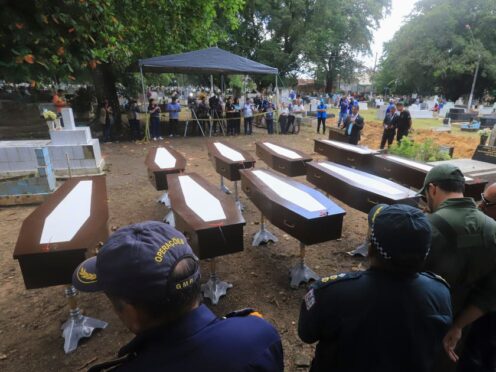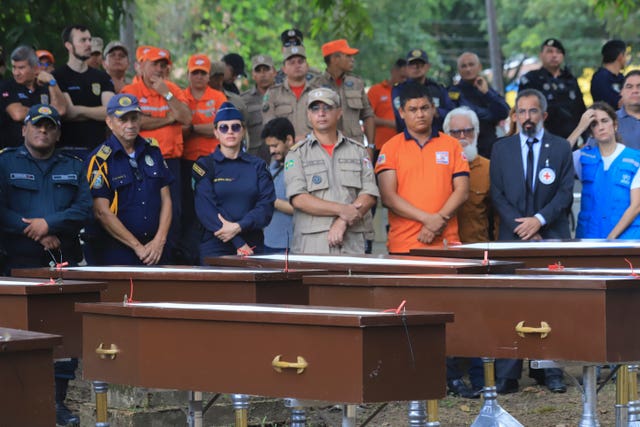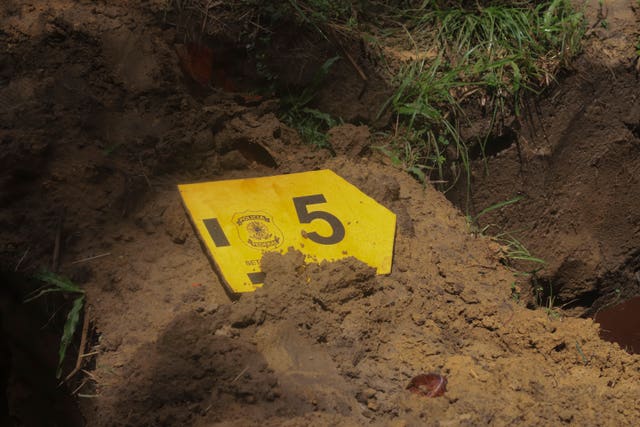
The bodies of nine migrants found on an African boat off the northern coast of Brazil’s Amazon region were buried in a solemn ceremony in the Para state capital of Belem.
Fishermen off the coast of Para found the boat adrift on April 13, carrying the bodies that were already decomposing.
Brazilian officials later said documents found in the vessel indicated that the victims were migrants from Mali and Mauritania and that the boat had departed the latter country after January 17.

Brazil’s federal police said later that the bodies were of adults or teenagers whose exact age could not be determined.
Agents found two documents — an identity card from Mauritania and a register of entry in Mauritania that belonged to someone from Mali.
The deceased migrants were buried in a secular ceremony organised by a number of groups involved in their recovery, such as the UN Refugee Agency, the Red Cross and the International Organisation for Migration, as well as Brazilian police, navy and civil defence agencies.
A tropical rain fell as their coffins were lowered into graves dug into the earth and those present watched in respectful silence.
Their roughly 12 metre boat was carrying 25 raincoats and 27 mobile phones, suggesting the original number of passengers was significantly higher.
This also implies that people of other nationalities may have been among the deceased, local officials have said.

Brazil’s federal police said it is unlikely they will extract any information from the phones due to the oxidation they were subjected to.
The force also added they had found paper notes in the boat with phone numbers from Mauritania, Mali and Congo.
A kind of stove and two containers that could have carried water or fuel were also found among the remains.
It was a rustic blue-and-white fiberglass boat that, when found, had neither motor, tiller nor rudder.
Its canoe shape is similar to Mauritanian fishing boats often used by migrants fleeing West Africa and aiming to enter the European Union via Spain’s Canary Islands.
So far, none of the victims have been identified.

Authorities said the manner of their burial would allow for subsequent exhumations in case families of the deceased were located and wished to transfer the bodies back to their home countries.
This year the number of people attempting the crossing from the northwest coast of Africa to the EU has seen a 500% spike, with the majority departing from Mauritania, according to Spain’s interior ministry.
But it is a dangerous route with strong Atlantic winds, and boats that go off course can stay adrift for months and be swept away to distant destinations, often leading migrants to die of dehydration and malnutrition.

Enjoy the convenience of having The Sunday Post delivered as a digital ePaper straight to your smartphone, tablet or computer.
Subscribe for only £5.49 a month and enjoy all the benefits of the printed paper as a digital replica.
Subscribe